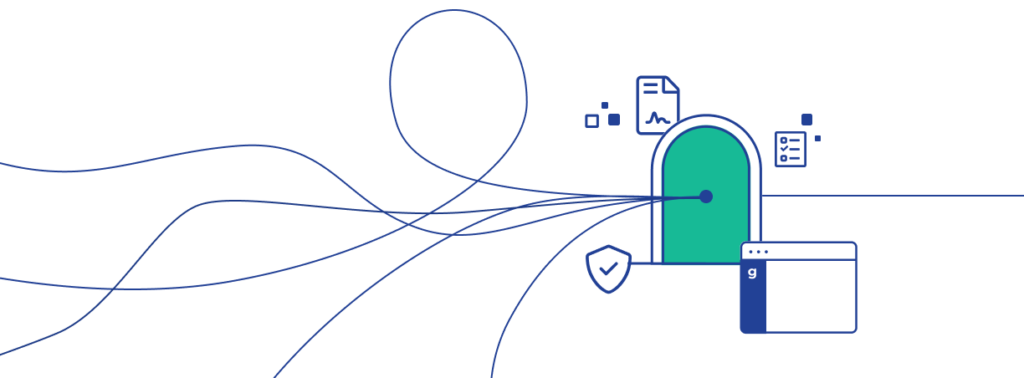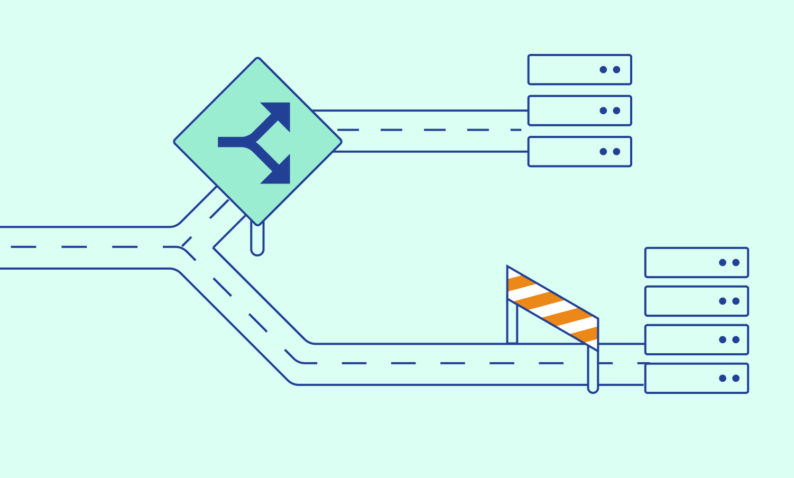Manage Supplier Information Like a Pro
Learn to solve supplier data issues before they appear.
Procurement teams everywhere attempt to become more proactive while drowning in reactive work. Sound familiar? Implementing change with too few resources can be challenging, but it is possible. The key to change with a constrained budget is an efficient process in supplier information.
When a business is new, procurement isn’t usually a priority until problems arise where it’s needed. While that very reactive approach may work well for a while, as the business grows, procurement strategies must grow and change too. As a result, companies can find themselves at risk if procurement processes stay in the reactive stage for too long.
One of the most essential tasks in procurement is supplier information management. Keeping supplier information accurate and up to date can feel near impossible, but with the right processes, this task can shift toward a more proactive approach. With proactive strategies in place, you’ll save your team the time it takes to reactively track down supplier information and use that time to make even more significant business impacts.
So how do you take your team’s supplier information management processes from reactive to proactive? Keep reading to learn more about the three stages of procurement maturity and how your team can make the switch.
Reactive procurement
The first level in supplier information management is doing whatever is needed to pay your suppliers.
When businesses are small, procurement is often an afterthought. With no team dedicated to the function, someone usually performs it as a side project. So, by default, the process becomes very reactive.
The business will gather supplier data as needed to pay suppliers and keep the business running. Therefore, a strategy looking at company goals and other risk factors only becomes necessary as the business grows.
If your business is in this phase, it’s crucial to begin by laying a foundation that can be quickly built upon while not taking more resources than the business has to give.
Keep the business running
The main goal of procurement at this stage is to keep the business in business. When a business initiative requires the use of a supplier, it is procurement’s job to find and pay that supplier. The best thing to focus on in this stage is doing this quickly and effectively.
Crucial to success at this stage is creating a solid foundation that can be built upon later. Establish a process of gathering and storing supplier data that is scalable. Try to act with the future business in mind as much as possible while realizing some things won’t get priority, and that is just fine.
Pay your suppliers
To keep the business running, procurement teams need to pay the business’s suppliers. This is the simplest goal of procurement in this stage.
Think of the basic information you need to do business with a supplier. Especially for new or immature organizations, the only information they’ll absolutely need is commercial data– as in, all of the information you’d need to write a check or send a payment via ACH.
Create supplier information processes
Before a procurement team has proactive processes, collecting and managing supplier data can be scattered and unorganized. This makes it very difficult to keep data up to date and easy to find.
However, as businesses grow, the need for supplier data also grows. As a result, procurement teams start to become more complicated. They work to find the best deals, protect the company from risk, and vet suppliers for various factors.
To set your business up for success as it grows, give the suppliers you work with clear and actionable next steps so both sides know exactly what needs to happen to be onboarded and receive payment.
Proactive procurement
Once a business has reached the next stage of growth where a procurement team becomes crucial, processes on your team should become more proactive. That transition could be seamless if your team introduced scalable processes and centralized data storage early on.
At this stage, you’re not only collecting data, but you’re also manually conducting supplier reviews, risk assessments, and negotiations. You can become more proactive, but there’s a lot of manual work and room for error.
The last thing a procurement team wants is to become a roadblock to the business. However, inefficient processes and low visibility can create bottlenecks and frustration for those trying to bring on new suppliers. If you’ve found this true for your team, it’s time to shift your processes.
Smooth processes
Implementing new processes is a difficult change for any team. Begin by finding the areas creating the most significant bottlenecks and shift those processes first. Then, ask questions and understand precisely how requests are made, where data is stored, how it is updated, and each sign-off or stop it has along the way.
Create logical, clear, and easy processes for those you work with to follow. The goal should always be to create the most straightforward, seamless process for your stakeholders to onboard and manage suppliers. When you gain the trust of the business, your job will become much more manageable. In the case of supplier information management, complication doesn’t always mean sophistication. Make sure to be clear and focus on what matters most.
Centralized supplier data
Create a centralized place to store your supplier data that is easy to update and visible to all necessary stakeholders. Often data is not stored in any central location but instead scattered across data centers and individual computers, creating redundant data, inefficient processes, unclear timelines, and many more issues.
Maybe your team is ahead of the curve and already uses a spreadsheet or form to manage and centralize your supplier data. But even this method will likely become unruly as you grow. When your program gets more sophisticated, your team will likely benefit from considering more robust systems such as ERP (Enterprise Resource Planning) or P2P (Procure-to-pay) tools.
Centralizing your supplier data takes time and strategy, but as long as your method is secure and scalable, it will be worth the work it takes to get there.

Offer a preferred supplier list
Having centralized and well-managed supplier data will also open other doors for your team. For example, you’ll better understand which suppliers you trust and work with often, and you can begin to form a list of preferred suppliers.
Suppliers often have the capability of fulfilling multiple needs for your business. For example, you onboarded a supplier as a project management resource, but then you learn they also have team messaging. So when someone from the company comes to your team and asks you to help them find a supplier to take on that will fulfill a team messaging need, you’ll be able to point them to a perfect supplier, and even better, you’ll already have contacts and data for that supplier.
With a list of these “preferred suppliers,” you can reduce the number of suppliers in your system, making managing their data more manageable. You can also promote suppliers with whom you already have contracts, which in many cases, can save your business significant money and reduce your risk exposure.
Widening the data scope
Another essential task that procurement needs to take on during this growth stage is to widen the scope of the data they collect from suppliers. Instead of collecting payment information only, other factors become just as essential, including risk, diversity, and sustainability.
Risk can include anything from physical to cybersecurity risk, essentially any risk that doing business with a supplier could pose. Be sure you understand all the serious risk factors and how to protect your business from them.
Diversity and sustainability are other important data points that procurement must understand. Many businesses have diversity or sustainability initiatives, and the suppliers they engage with must support and help them to meet those business goals.
Moving toward business goals
As your procurement team matures, you’ll find that you can focus on more big-picture initiatives and how procurement can play its part in helping your business reach its growth and financial goals.
Your team can save the business money, help it grow with the help of new suppliers, and push it toward more sustainable and diverse goals.
Ideal-state procurement
Once you’ve become proactive, the next ideal step is automation. Automating your way out of having to do many of the steps above will save your team time and money and make way for exponential growth.
Tools that will automatically score vendor risk, leverage performance data, and integrate with third-party data providers will help you take your team to the next level.
Automation will help your team eliminate risk, data inaccuracy, and fraud. With those factors automatically taken care of, not only will you sleep better at night, but you can also focus on more value-adding activities like driving innovation, negotiating better contracts, and cutting down on tail-spend.
Your team won’t just collect data. They’ll act on it.
Suppliers are proactive
Suppliers are held accountable for updating their commercial data in this ideal state. This way, procurement teams onboarding suppliers can ensure that the data they receive and store can be accessed quickly by both parties, viewed securely, and stored easily.
Allowing suppliers to manage their own commercial data and integrating with tools that will automatically bring critical supplier data into your hands, you’ll be able to significantly reduce the risk of data inaccuracies and keep supplier data up to date.
This would create a more symbiotic relationship between procurement and suppliers–each motivated to provide value to the other.
Collect & store data automatically
Imagine the time your team would save if supplier data were collected automatically and continuously. For mature organizations, supplier data seamlessly connects with critical business tools, keeping the data in P2P and ERP tools up to date and accurate.
Using automated tools for supplier data management not only saves time and reduces errors but also improves data accuracy and consistency. This, in turn, can help businesses make more informed decisions, mitigate risks, and reduce the costs associated with managing supplier data manually.
Symbiotic relationships formed
While this is true of all procurement levels to some extent, perfect-state procurement includes a symbiotic relationship between procurement and suppliers. Gone would be the days of incessant emails asking for updated information or data lost on individual computers or failing to meet diversity or sustainability goals.
Instead, procurement teams would be able to find suppliers that fit their needs quickly, and suppliers would be able to be hired on by their ideal clients.
What to do next?
If you’re looking for a solution to manage your supplier data, centralize your intake process, and become the team your business can’t live without, look no further.
Graphite Connect allows procurement teams to implement a streamlined supplier information management process and centralized supplier data. It can also help you increase visibility, onboard new suppliers, and even keep track of key metrics.
Interested in learning more?
Talk with one of our team members to learn how Graphite can make Supplier Information Management a breeze.
Request a Demo
